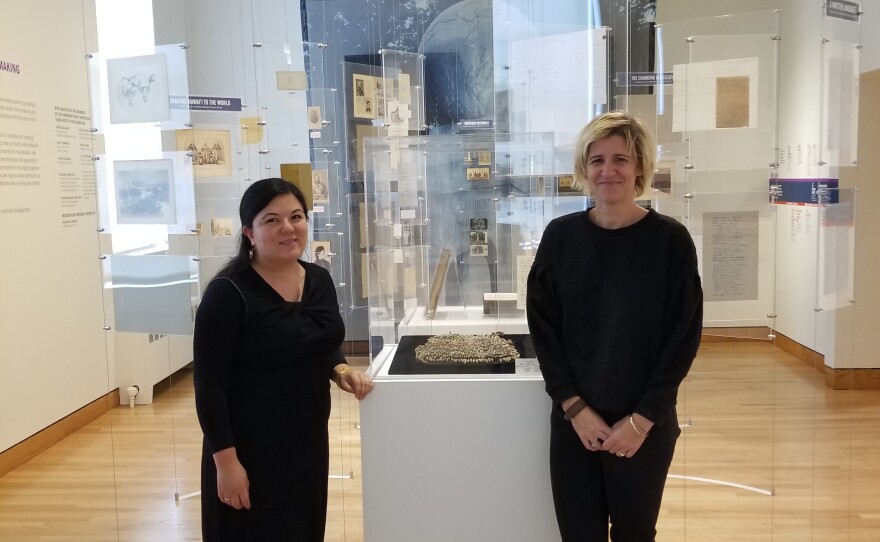A new exhibition at Williams College explores the institution’s archives for a new look at its own history.
The Williams College Museum Of Art, or WMCA, is presenting "“The Field is The World:” Williams, Hawai?i, and Material Histories in the Making" in Williamstown, Massachusetts.
“And the story kind of starts with the discovery — or rediscovery — of a box in the basement of a nearby dorm in 1986," said Sonnet Coggins. She is the associate director for academic and public engagement at WCMA and one of the exhibition’s co-curators. She says the box contained about 64 objects gathered over a century before.
“The collection was part of a natural history museum that was made entirely by students starting in 1835 and they did this because they didn’t have sciences in the disciplines, so they went out on expeditions," Coggins told WAMC. "They got gifts from missionaries, they got gifts from institutions like the Smithsonian that had just been created to build a cabinet in order to learn about the natural world.”
Their travels brought them across the world, from Florida to Greenland. It was a revolutionary period in the natural sciences, as Charles Darwin published his findings on evolution. The museum went defunct in 1908 and its contents were scattered across the Williams campus.
“And so this show kind of pulls those objects out of storage because they haven’t been looked at since they were acquired, and starts asking questions about how they made their way to the museum, and what collecting meant then, and what it means now, and what it means that these objects have been sitting in our basement and not used for 40 years now,” Coggins said.
“When we started this project, we were thinking about what are the histories that lie latent on this campus," said Kailani Polzak, an assistant professor in the Williams art department. She focuses her scholarship on European art of the 18th and 19th century and the construction of race in visual culture.
“The centerpiece of this gallery is a kupe?e niho ??lio — or an adornment made from dog teeth that came from Hawai?i, likely made in the 19th century,” Polzak told WAMC.
As with other rediscovered items in the box, Polzak said she and Coggins used the dog tooth ankle adornment to examine the college’s relationship to Hawai’i.
“We took that object as our starting point and then we went to the college archives, so from WCMA to college archives, and we found the papers of Samuel Chapman Armstrong, class of 1862, born in Maui, and he’s very famous in the United States for founding the Hampton Institute and now Hampton University,” said Polzak.
Pulling at the thread of Williams and Hawai’i led to even more revelations about the unlikely connection between the disparate locations — like how the college’s missionary tradition in the 19th century created a pipeline across North America.
“We found in the course of our research for this exhibition that there were 30 Williams students who either came from Williams and then went to Hawai’i as missionaries or were born to missionary families in Hawai’i, went to Williams, and came back," said the associate professor and co-curator. "And 30 during the course of the 19th century is a good number, especially considering for the good portion of that century, there isn’t a transcontinental railroad.”
The exhibition features recordings of faculty and students the curators interviewed in the making of the gallery, weaving contemporary voices about Williams into an examination of its history. One student — N?lamak? Ahsing — class of 2021 — even learned how to write and compose in traditional Hawaiian song to compose a contemporary piece for the exhibition.
“He begins by saying that the earth shakes, and ultimately the oli is a call to his ancestors to speak, and that speaks again to the larger project of this gallery, which is bringing voices in," said Polzak. "All of these objects can float around in a disembodied sense, but these are the histories of real people, and so he’s asking his ancestors to speak and be present in this space where their voices haven’t been heard potentially ever before.”
"“The Field is The World:” Williams, Hawai?i, and Material Histories in the Making”" will be at WCMA through January 2nd, 2019.







